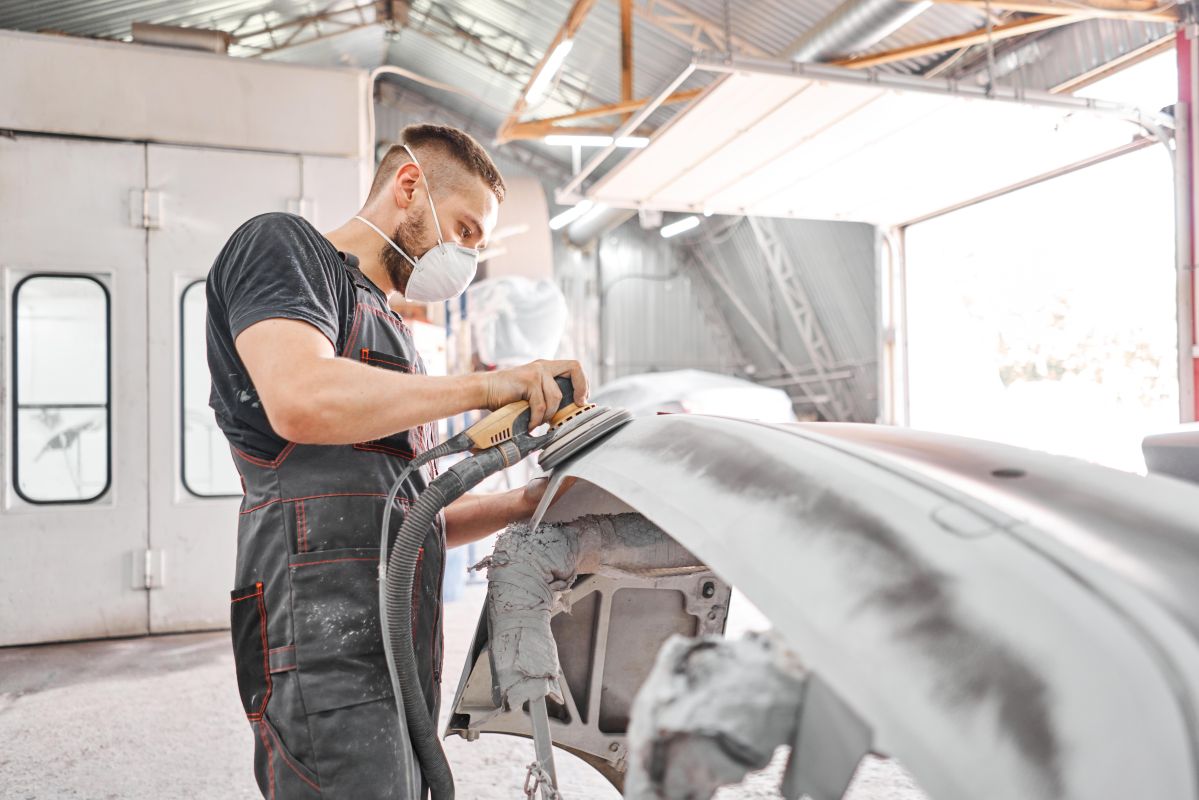Modern automotive paints are harder and more durable than ever. The new coatings, driven by environmental regulations and consumer demand for durability, have become increasingly difficult to manage with hand-held tools.
Automakers are purchasing lower volatile organic compounds paints (VOCs) at a higher rate, according to Globe Newswire. The Federal Clean Air Act regulates the use of VOCs -- the chemicals radiate odorous toxins that may contribute to certain types of cancer.
The paint changes are forcing collision repair technicians to reassess their use of abrasive tools.
“From my experience, paints are now … more resistant to scratching and damage,” Nolan McGannon, a technician for Pet Auto Body in Calgary, Alberta, told Autobody News.
McGannon hasn’t noticed a change in the quality of Scotch-Brite, the commercial scouring pad his shop uses, but the paint changes have prompted a different approach.
“We need to allow adhesion for repairs and new products. The end result is maybe a few extra pieces of sandpaper used, and Scotch-Brite doesn’t go as far over the day,” he said.
The increased preparation effort for repair professionals like McGannon doesn’t impact drivers because sanding tools are inexpensive to replace. However, vehicle repair experts at 3M, the company that made Scotch-Brite synonymous with automotive sanding, say there are more cost-effective, time-effective and modern solutions.
In an interview with Autobody News, Global Industry Relations Leader Jason Scharton and Global Application Engineering Director Dan Wittek said modern automotive clear coats have fundamentally changed collision repair. But rather than try to make Scotch-Brite harder, 3M has developed an entirely new class of abrasive technologies, including the recently released Cubitron II.
“Scotch-Brite is a non-woven abrasive product that doesn’t generate deep scratches -- it’s good for removing some material,” Scharton said. “In collision repair, its biggest use was, and may still be, to prep the panel for refinish or blend.”
Wittek noted Scotch-Brite typically leaves linear scratches in vehicle paint. With modern finishes incorporating fine metallics and pearls, these hand-held tools can create permanent indentations in the surface.
“If we’re talking about blend prep, our standard operating procedure would be to hand-scuff hard-to-reach body lines or edges with a grey Scotch Brite,” Wittek said. “Then, switch to a machine operation, like the Cubitron II, to de-gloss the larger surface using an interface pad, so you don’t completely flatten the factory peel because you want to retain that for orange peel retention. Then you just lightly dust over the edges with the machine sander.”
3M continues to collaborate with scientists, OEMs and paint manufacturers to develop tools suited for modern automotive finishes. The creation of 800 and 1,000 grit sanding materials, for instance, required developing advanced high-heat kilns that could ventilate excess energy without losing the fine ceramic materials.
“It’s literally sharp dust,” Wittek said. “How do you keep [the high grit material] from just going out in the ventilation? Those are the problems that just take their very difficult problems to solve. 3M is in a unique position to apply our material science to get to get the job done.”
While these new tools may represent higher upfront costs for shops, Wittek and Scharton emphasize their efficiency: technicians can now prep two doors in the time it previously took to sand one, ultimately saving body shops money through increased productivity.












Ben Shimkus